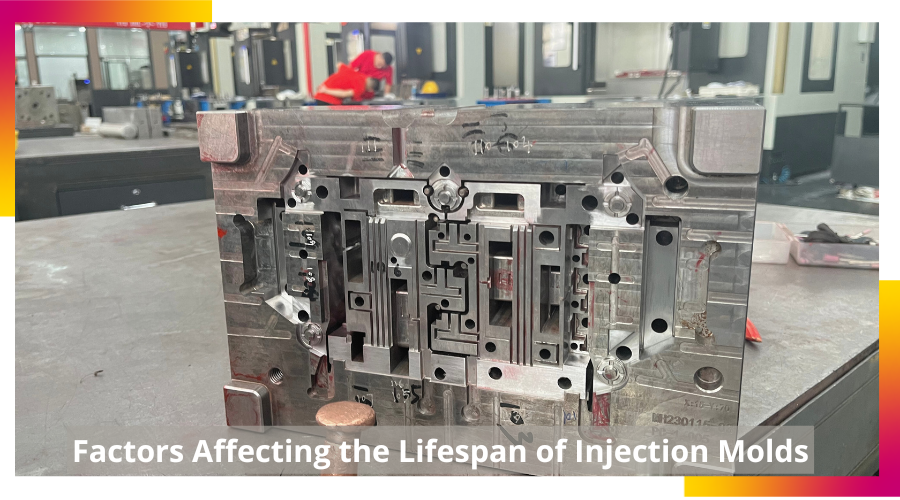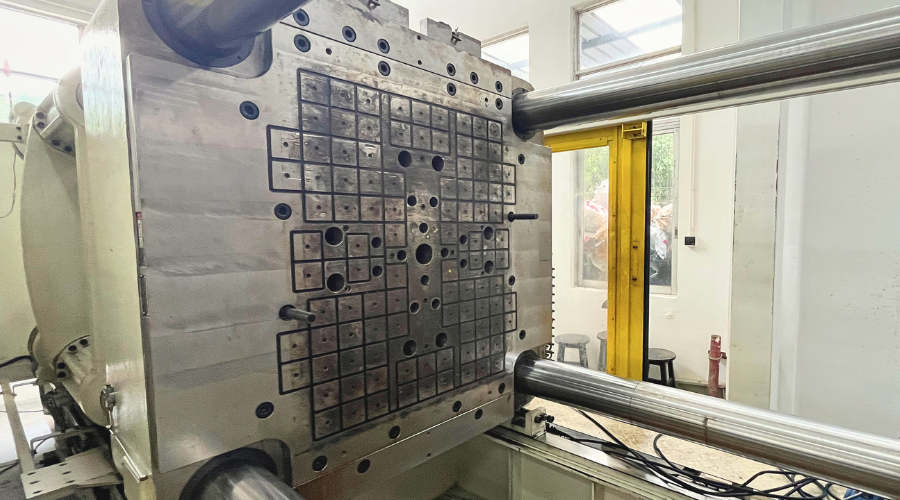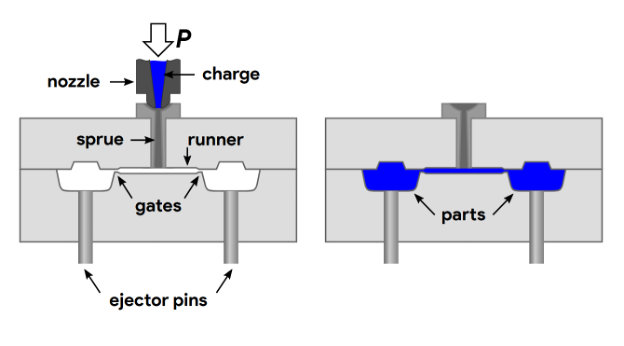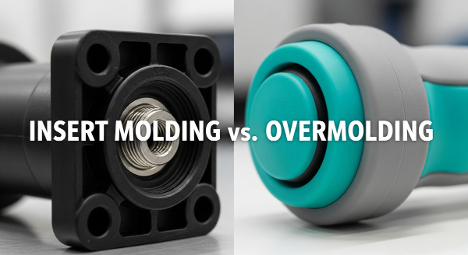Injection molding lifespan refers to the expected or estimated duration of time that an injection mold can remain functional and produce plastic parts with acceptable quality and performance. It represents the operational life of the mold, which is the period during which the mold can withstand the stresses and demands of the injection molding process before significant wear and deterioration affect its efficiency and output.
Factors Affecting the Lifespan of Injection Molds
- Material Selection: The choice of material for the injection mold greatly impacts its lifespan high-quality tools steels like p20, H13, and S7, as well as advanced aluminum alloys, offer superior strength, durability, and resistance to wear and tear.
- Design and Engineering: A well-designed mold is more likely to have a longer lifespan. Proper cooling channels, venting, and gating systems are crucial to ensure efficient and consistent production.
- Mold Maintenance: Regular maintenance and cleaning are essential to keep the injection mold in optimal condition. Contamination, rust, or debris inside the mold can affect the quality of the produced parts and shorten the mold’s lifespan.
- Production Volume and Material Choice: The production volume and type of plastic material used can impact the wear and tear on the mold. High-volume production and abrasive materials may lead to faster mold degradation.
- Operating Conditions: The temperature and pressure during the injection molding process can affect the mold’s performance. Excessive heat and pressure may lead to thermal fatigue and premature failure.
- Part Complexity: The complexity of the parts being produced can influence the mold’s lifespan. Molds producing intricate and complex parts may experience higher stress levels.

How To Maintain Injection Molds To Extend Their Lifespan
Maintaining injection molds is crucial to extend their lifespan and ensure consistent, high-quality production of plastic parts. Proper maintenance practices can prevent premature wear, reduce downtime, and save costs associated with mold repair or replacement. Here are some essential steps to maintain injection molds effectively:
- Regular Cleaning
- After each production run, clean the mold to remove any plastic residues, dust, or contaminants that may have accumulated during the molding process. Use appropriate cleaning agents and tools, avoiding harsh chemicals that could damage the mold surface.
- Inspections and Preventive Maintenance
- Schedule regular inspections of the injection mold to identify any signs of wear, damage, or potential issues. Catching problems early can prevent more extensive damage later on.
- Conduct preventive maintenance following the manufacturer’s guidelines or best practices. This includes lubricating moving parts, checking fasteners, and inspecting cooling systems.
- Proper Storage
- When the mold is not in use, store it in a clean and dry environment. Apply rust-preventive coating to steel molds to protect them from corrosion.
- Store molds on flat surfaces to avoid warping or distortion and use protective covers to shield the mold from dust and debris.
- Cooling System Maintenance
- The cooling system is essential for maintaining the mold’s temperature and preventing thermal stress. Regularly inspect cooling channels for clogs or blockages, and flush the system if necessary.
- Use water with proper water treatment to prevent scaling and corrosion in the cooling channels.
- Optimal Processing Conditions
- Operate the injection molding machine within the recommended temperature and pressure ranges. Excessive heat and pressure can lead to thermal fatigue and reduce the mold’s lifespan.
- Ensure that the injection molding machine is well-maintained, with regular checks on hydraulic and electrical systems.
- Proper Handing
- When handling the injection mold, use lifting equipment and avoid dropping or mishandling it to prevent physical damage.
- During installation and removal, follow proper procedures to avoid any undue stress on the mold components.
- Monitoring and Data Analysis
- Keep track of the number of cycles the mold has undergone to predict maintenance intervals and plan for mold replacements if necessary.
- Analyze production data and inspect finished parts for any defects or inconsistencies that could indicate mold issues.

Conclusion
Injection molds play a pivotal role in the plastic injection molding process, influencing the quality and consistency of the final products. The lifespan of these molds is affected by various factors, including material selection, design, maintenance, and production conditions. While there are general estimates for the lifespan of injection molds, actual results can vary widely. By adhering to best practices and investing in high0quality molds, manufactures can extend the lifespan of their injection molds, optimizing production efficiency and reducing overall costs in the long run.
-q4gvl4k29y4hq8j9rjpapvj0ft06fje63olt7p210i.png)


